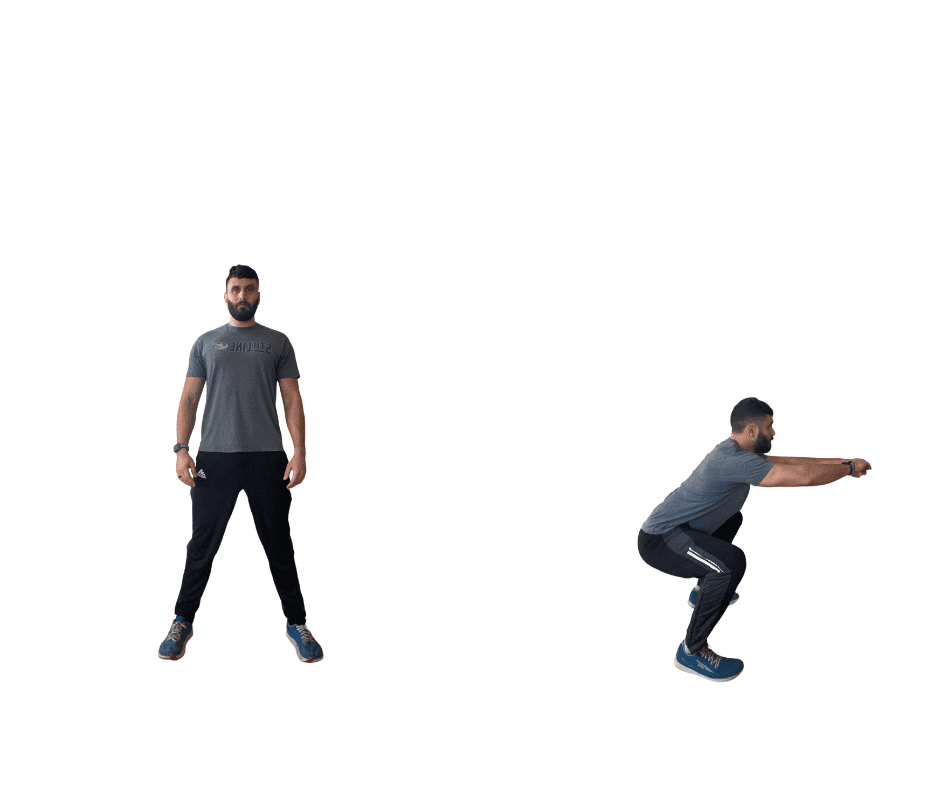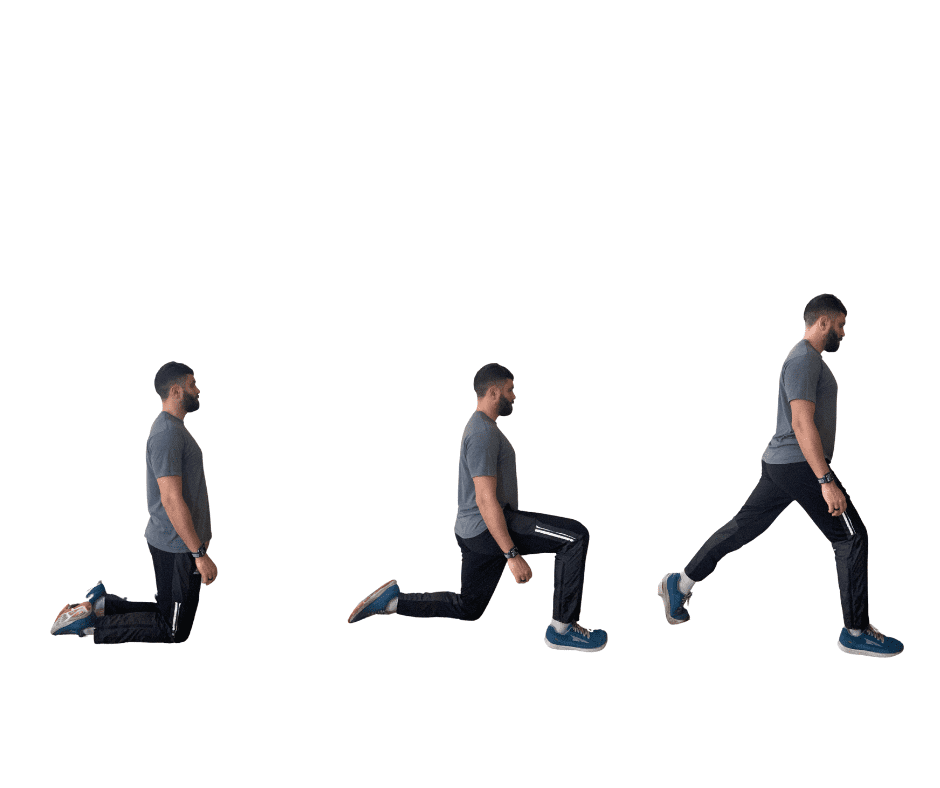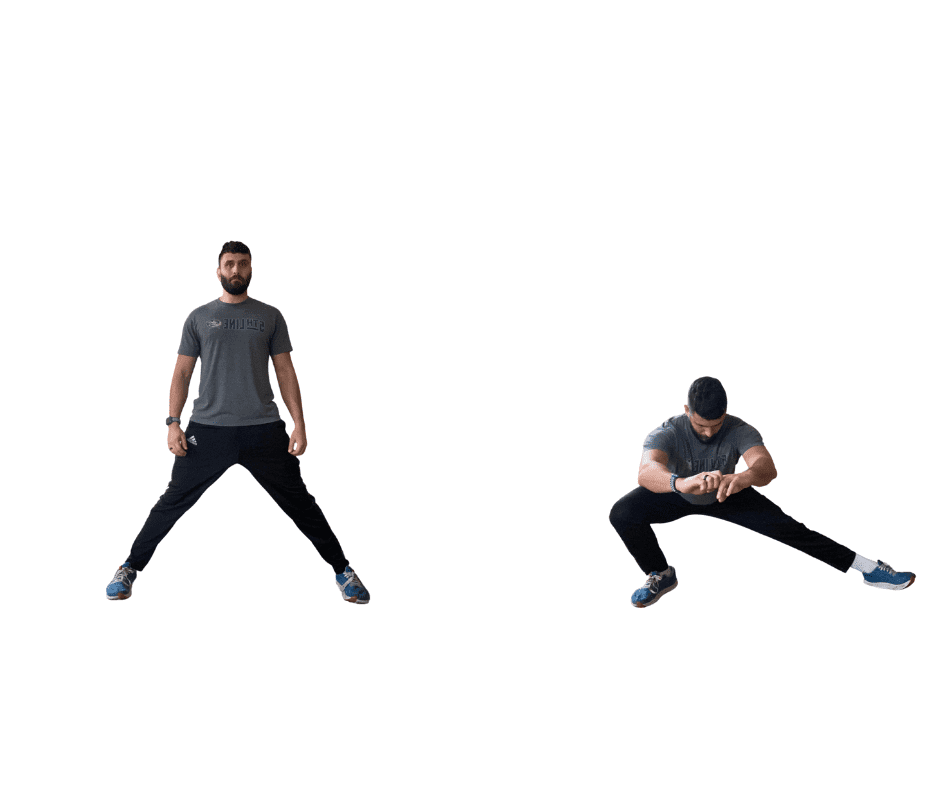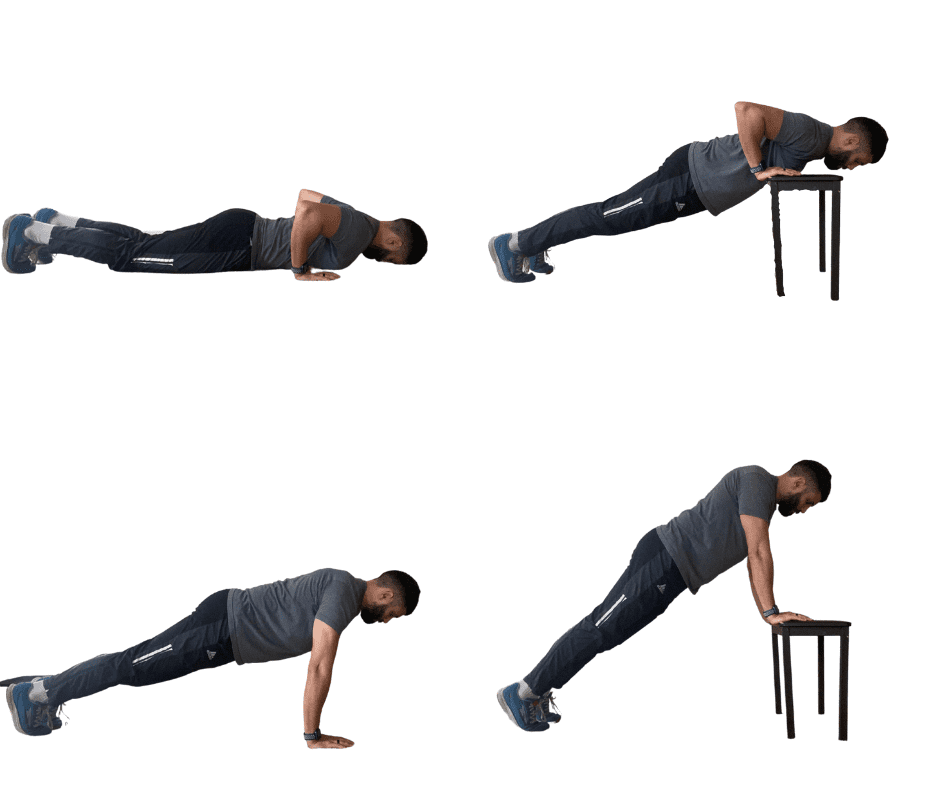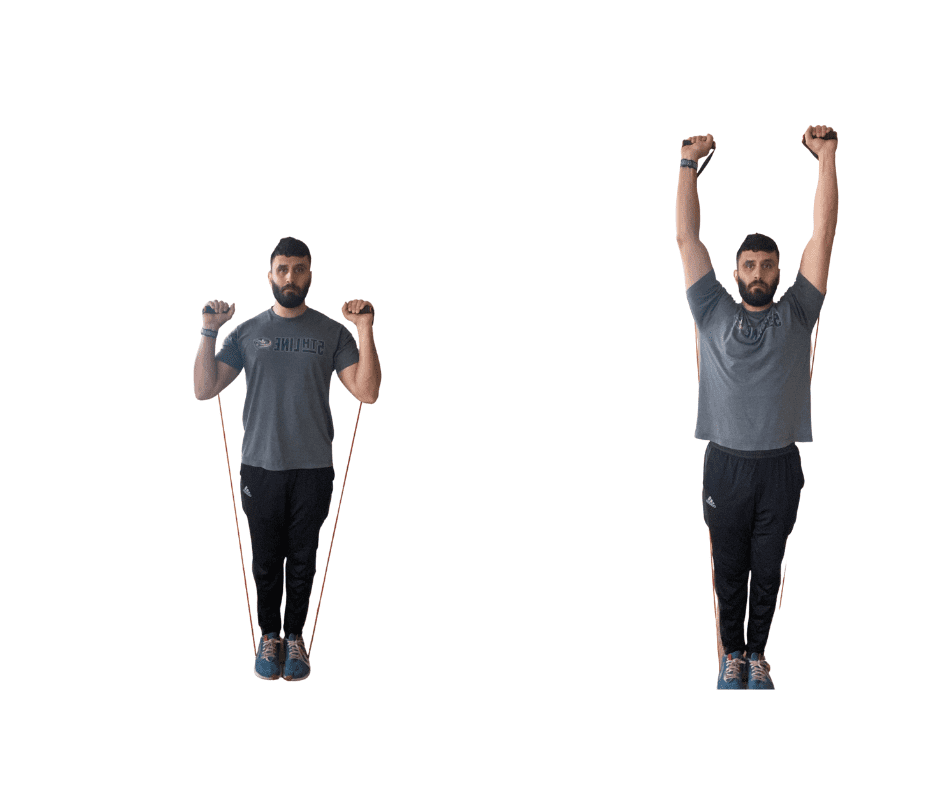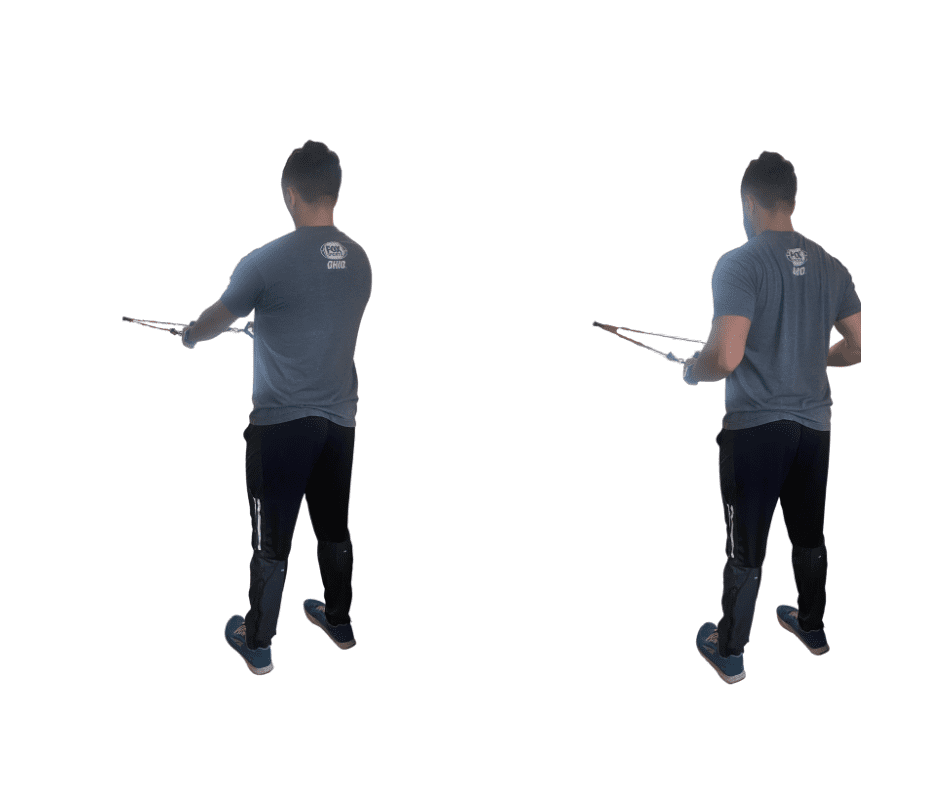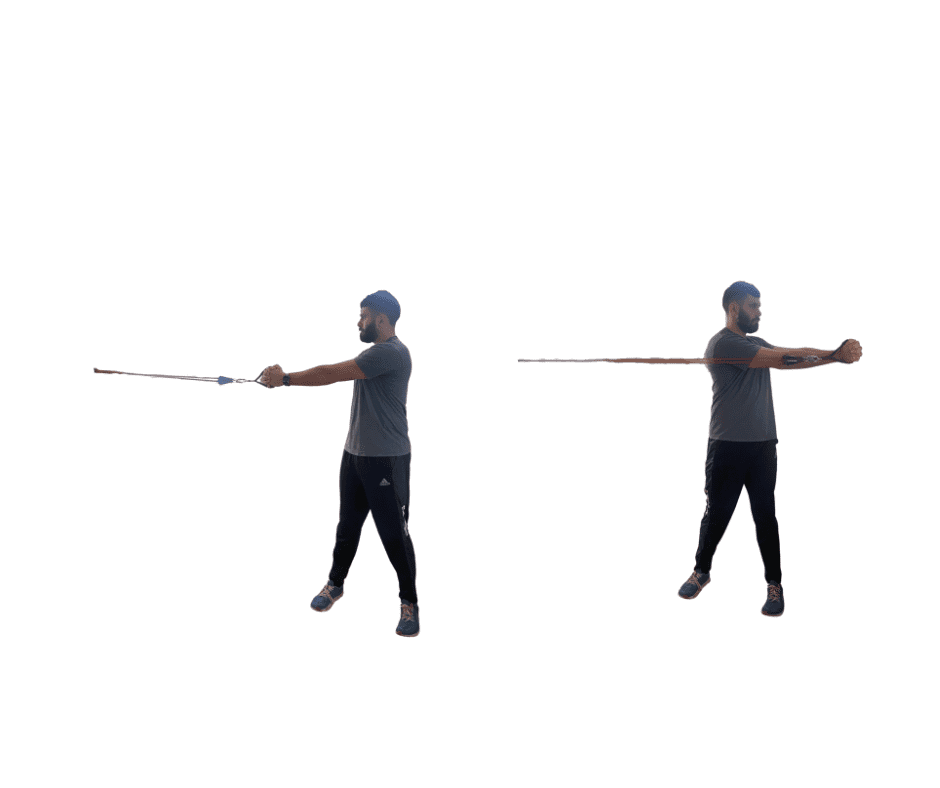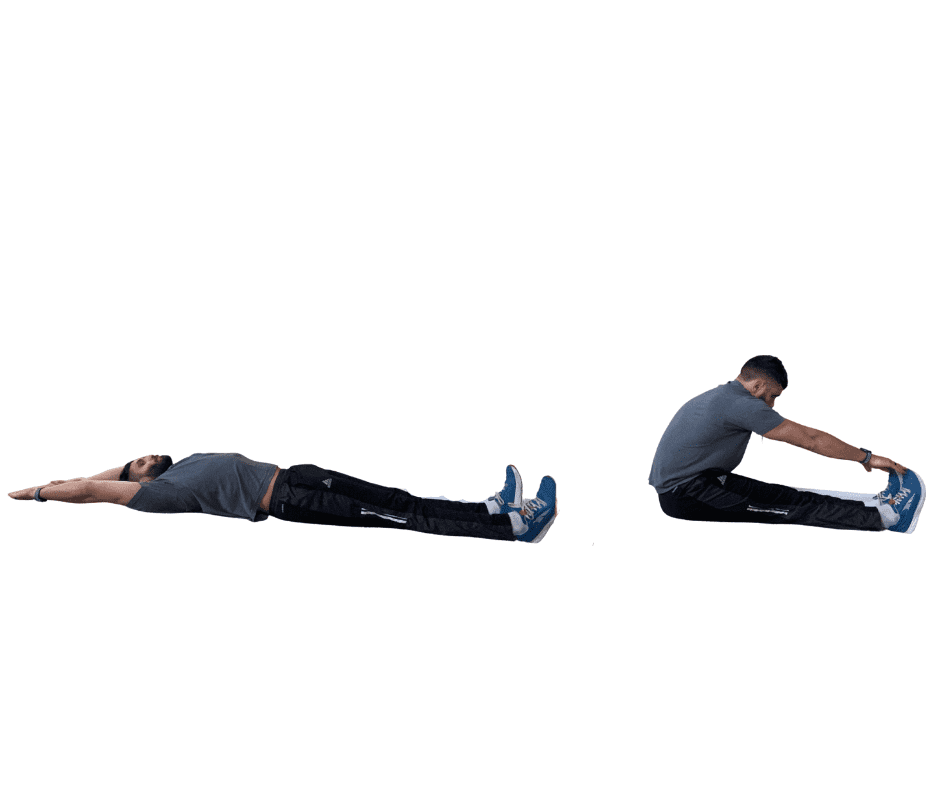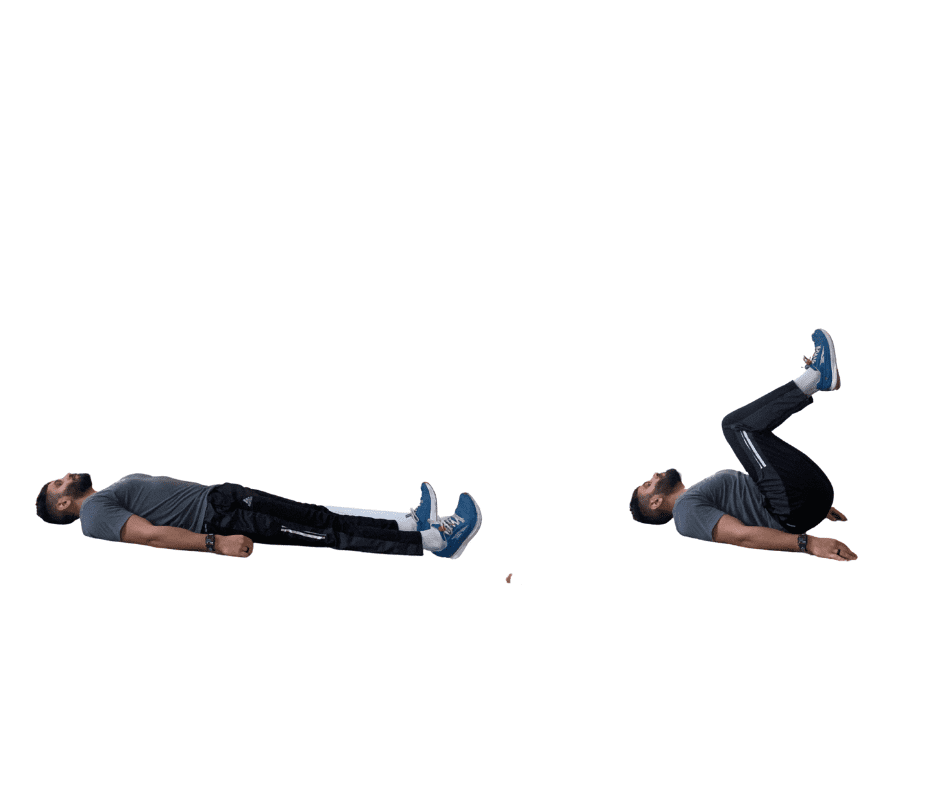Are you someone who wants to get a good workout in but doesn’t have the time or access to a gym? Getting to the gym is one of the most challenging aspects of committing to an exercise routine. Between your job, your significant other, and maybe even kids, it’s easy to understand why getting to the gym is low on the list of daily to-dos. If these barriers sound like you, consider working out at home.
In today’s article, I will show you 10 workouts you can do at home with just a $15-20 piece of equipment and a door. With these workouts, you will effectively exercise every muscle in your body, guaranteeing excellent results without leaving your home or getting dressed for being in public.
The one thing you will need to get is a cheap pack of resistance bands that come with a door anchor for some of the exercises below. If you search for “resistance bands with door anchor” online, you will find many options for very little money that can be delivered to your door.
10 Best Workouts at Home
1. Bodyweight Squat
We will kick things off with the king of all exercises: the squat! I like doing bodyweight squats because it is much easier for you to do full-range squats than with weights on your back. A study in September 2019 showed that full-range squatting increased the size of the glutes, knee extensors, and groin muscles significantly more than doing half-range squats.[1] Because of this, it’s more advantageous for you to do less weight with a greater range than more weight and a smaller range!
In order to do a squat, start in a standing position with your feet about shoulder-width apart and pointed slightly away from each other. Next, slowly lower your body straight down. Go as far as your current mobility will allow while keeping your heels on the ground and your chest upright.
Return to the standing position by reversing what you just did, and viola! You have completed a squat!
To start, I recommend doing 3 sets of 30 repetitions, resting 30 seconds to 1 minute between each set.
2. Split Squat
The split squat is like a squat in that it targets your leg muscles, but this exercise differs in that it will also help to improve your balance! If you know your balance is particularly poor, I recommend having something nearby to grab onto for support if you need it!
To do a split squat, start on both of your knees like so:
Now, take one foot and put it flat on the ground in front of you. Make sure that your shin is perpendicular to the ground.
From this position, engage the leg muscles in your leading leg and come to as tall of a standing position as you can.
Once you reach the top, lower yourself back down to the ground and repeat! If you lose your balance and have to move your feet to catch yourself, start over from step one so you always have the same position!
I recommend starting with 3 sets of 15 repetitions on each leg, resting 30 seconds to 1 minute between sets.
3. Cossack Squat
The cossack squat is going to be our last leg exercise. The cossack squat is a great exercise for targeting your hips and quadriceps. It is also an excellent exercise for stretching your hip muscles, so if you have tight hips, this is a good one for you!
Start with your feet as wide as they can go.
Now, “sit” down and back on one side, keeping the other leg straight. This is where you will feel a nice stretch in the leg that is long.
From here, return to the starting position and repeat on the other side. I recommend doing 3 sets of 10 repetitions on each side, resting 30 seconds to 1 minute between sets.
4. Push up
Moving to the upper body now, we have a classic: the push-up! The push-up is one of the greatest upper body exercises you can do as it works your chest, triceps, shoulders, and abdominal muscles!
The push-up is very difficult for many people, so as we discuss how to do this, I will provide a simple modification you can do if you find them particularly difficult.
To begin, lay on your stomach on the floor or find a sturdy table. Position your arms so that your forearms are perpendicular to the ground or the table when you are at the bottom. Your arms should be about 45 degrees to your body.
From here, push yourself up until your arms are straight, and lower yourself back down.
It’s important to note that your body should stay as straight as it was when it was on the ground. If you are rolling off the ground, do the push-ups from a chair or table to ensure perfect form!
5. Resistance Band Shoulder Press
Keeping with the upper body work, we will do resistance band shoulder press next. Pushing overhead is a fundamental movement for a human as it is a task you perform many times a day without even realizing it. Beyond that, the shoulder press is excellent for developing strong shoulders, triceps, and upper traps.
To start, put handles on the band and step on it in the middle. Raise your hand to shoulder width with the bands outside your arms.
Next, push straight up and back, reaching as high as you can with your hands.
Slowly lower the bands back down to the starting position.
Select a weight that you can perform 15-20 repetitions for 3 sets.
6. Resistance Band Lat Pulldown
The resistance band lat pulldown is another great upper body movement that will target your latissimus dorsi muscles, biceps, and rear shoulder muscles. If you are someone who wants to have a slimmer-looking waistline, one of the best ways to do that is to have strong lat muscles, as they are the muscles that give you that “v-shaped” upper body!
To do a resistance band lat pulldown position the door anchor just above the top hinge on a door. Feed the band(s) through the loop, step back, and bend forward so that your arms are stretched overhead. Make sure there is tension on the band when your arms are fully extended.
Now, pull your shoulders down towards your hips and then pull the rest of the way with your arms. This movement is a little tricky at first, but with practice, you will master it!
At the bottom of the motion, you should feel the back muscles that rest on top of your rib cage working hard.
Choose a weight that you can perform 15-20 repetitions with for 3 sets.
7. Resistance Band Row
The resistance band row is another exercise to target your back muscles, specifically your lats, rhomboids, lower traps, and rear shoulders. You will also get a bit of bicep work through this exercise. One of the other major benefits of doing rows is that doing them will help to improve your posture, which is good if you are someone who experiences back pain of any kind!
Start by putting the door anchor in the door, so it is level with your stomach. Feed the band(s) through the loop and step back until there is tension in the band when your arms are fully extended.
Now, first, squeeze your shoulder blades together and then pull all the way to your stomach with your arms. It is essential that you first squeeze your shoulder blades together! Be sure to complete this step!
Slowly return your hands to an extended position, relax your shoulder blades, and repeat!
Choose a weight that you can perform 15-20 repetitions for 3 sets.
8. Resistance Band Twist
The final three exercises in our list here will be ab exercises. The abs are important for looking good and helping to alleviate back pain and maintain our balance when moving.
The exercise we will start with is a resistance band twist that will target your obliques (the abs on the sides of your body). Developing these muscles will help you to stabilize your body side-to-side and when turning, two instances where people frequently throw their backs out!
To start, position the door anchor at about shoulder height, feed the band(s) through the loop, and attach only one handle to them. Finally, stand 90 degrees to the door with your arms extended in front of you.
Now, keeping your arms straight, rotate your whole upper body away from the door until you cannot turn any further. If you are turning to the right, you should feel your right side obliques working hard.
Slowly return to the starting position and repeat!
Choose a weight that you can do 10-15 repetitions on each side for 3 sets.
9. Roll-ups
The roll-up is an exercise that was popularized through pilates. It is an ab exercise that will torch your core and improve your lower body mobility. The point of this ab exercise is to remove the ability for you to use your legs for help and put all the pressure onto your core.
To set up for a roll-up, lay completely flat on the ground with your legs extended and arms stretched overhead.
To perform the exercise, I want you to imagine curling your upper body towards your feet vertebrae by vertebrae. When you are perpendicular to the floor, try to touch your toes by continuing to reach forward.
Return to a laying position by slowly lowering yourself down, rolling vertebrae by vertebrae. The act of “rolling” is essential here as it cues your body to engage your abs as much as possible.
Try to perform 15-20 repetitions of this exercise for 3 sets.
10. Knee Tucks
The knee tuck is a reverse roll-up, except it targets your lower abs more. Whereas in the roll-up, you try to remove your legs from helping, in the knee tuck, the goal is to limit the amount that your upper body helps.
The setup for the knee tuck is almost the same as the roll-up: lay flat on the ground with your legs out long, only this time, you can rest your arms down by your side.
To perform the knee tuck, begin bending your knees and curling them up to your chest. You want to feel that your low back is rounding by flexing your abs.
To finish the rep, flatten your back to the ground, extend your legs out, and set them back down onto the ground.
Try to complete 15-20 repetitions for 3 sets of this exercise.
If this exercise makes your low back sore, you can place a pillow under your back for support.
Conclusion
With the 10 exercises listed above, you can be guaranteed to get a full-body workout at home that will challenge you and symmetrically develop your body.
The National Institute of Health did a major study on how often you should workout each week. Through their research, they concluded that working out 1-2 times per week actually had an increased risk of injury, likely due to lack of practice, and that it was best for adults to exercise 3 or more days a week.[2]
So, do your best to try and complete this workout at least three times each week, and if you stay patient and consistent, you will see tremendous results in the shape of your body!
Featured photo credit: Scott Broome via unsplash.com
Reference
| [1] | ^ | Eur J Appl Physiol.: Effects of squat training with different depths on lower limb muscle volumes |
| [2] | ^ | Korean J Fam Med.: An Overview of Current Physical Activity Recommendations in Primary Care |

